- Home
- James Rollins
The Demon Crown: A Sigma Force Novel Page 6
The Demon Crown: A Sigma Force Novel Read online
Page 6
“Take one of our bikes,” Seichan said. “You gotta warn them.”
He stared up toward the cottage. They had rented a couple of motorbikes so they could explore trails too thin and treacherous for a regular vehicle.
He glanced back to Seichan, who must have read the concern on his face.
She frowned at him. “I’ll get up there on my own. May take me some time, but I’ll alert Sigma, get them mobilizing a local response.” She pointed again. “Go. Before it’s too late.”
He nodded, knowing she was right.
He checked his watch. The game was scheduled to start in ten minutes. He’d never make it there in time, but he had to do what he could. Clenching his jaw, he sprinted for the switchback that led up the cliff to the cottage.
As he reached the trailhead, he glanced back. Seichan was on her feet. Her legs shook but her face was stony with determination. Their eyes met. Both knew the danger Gray was rushing toward—and one other certainty.
Their vacation was over.
5
May 7, 1:55 A.M. EDT
Washington, D.C.
Painter Crowe had been expecting this call for months.
Trouble always had a way of finding Commander Gray Pierce. It was why Painter, as the director of Sigma Force, had been keeping tabs on the errant agent during the man’s long walkabout around the globe. Still, Painter could never have imagined or predicted how this particular trouble would have presented itself.
A swarm of wasps?
Exhausted but strung taut by tension, he combed fingers through his black hair, tucking a lock that had gone snowy white behind one ear. He had ended his call with Seichan ten minutes ago and sent an alert up the chain of command, both to his superiors at DARPA and to the appropriate authorities in Hawaii. As he sat at his office desk, he pondered the strangeness of the situation, taking to heart Seichan’s warning before she had hung up.
This was no random act of Mother Nature. It’s a biological assault.
A knock at his open door drew his attention forward. A slim shape whisked into the room. Captain Kathryn Bryant was his second-in-command. Despite the time being after midnight, her shoulder-length auburn hair was combed and braided in the back, as conservative as her attire: navy blue suit, crisp white blouse, black leather pumps. Her only flash of color was a jeweled pin on her lapel, a tiny gold-enameled frog. She’d been awarded the gift by an amphibious team she had joined during a marine recon operation for naval intelligence. One teammate from that mission had never come back. She continued to wear the pin in his memory.
After her stint with the military, Painter had recruited Kat as an analyst for Sigma. She quickly grew to be as essential to operations here as the directorship—maybe even more so.
“We’ve got a far larger problem brewing on those islands,” she said brusquely.
“What do you mean?”
Kat reached his desk and tapped at an e-tablet in her hand, then pointed to one of the three flat-screen monitors mounted to the walls of his office. A topographic map of the Hawaiian Islands bloomed on the screen. He swung his chair back from his desk to better view the image. Small red dots peppered three of the largest islands.
“It wasn’t just Maui that was attacked.” She stepped over and tapped a red zone along the island’s eastern shore, where Seichan had reported the attack. “We’ve also got reports of similar assaults on Oahu and the big island of Hawaii.”
Painter stood and joined her. He had hoped to attribute all of this to some lone attack, perhaps ecoterrorists trying to prove a malicious point.
On the map, Kat pointed to the state’s capital, Honolulu. “A Cessna crashed near Diamond Head, about the same time as the three on Maui.” She then shifted her finger to the largest Hawaiian island. “Over in Hilo, a hospital sent out a broadcast for emergency help. They’ve been overrun by people suffering from varying degrees of stings. Including a few fatalities.”
Painter remembered Seichan’s warning.
This was no random act. . . .
It seemed she was right. This attack had been coordinated.
Kat continued, “So far we’ve heard nothing from Kauai or any of the other smaller islands, but I suspect it’s only a matter of time. I have Jason scanning all newsfeeds, social media, and law enforcement chatter across Hawaii.”
“Why out there?” Painter pondered aloud. “Why those islands?”
“We don’t have enough intel yet to make any suppositions.” She studied the topographic map. “But perhaps Hawaii’s remoteness is part of the reason. Beyond the immediate danger to the populace, the introduction of an aggressive foreign species could wreak havoc to the state’s isolated ecosystem.”
It was a chilling thought, but such long-term concerns would have to wait. They had a more immediate question to answer.
“What exactly are we facing?” he asked. “What was unleashed on those islands?”
Kat turned back to him. “I’ve already placed a call to an entomologist over at the National Zoo. Dr. Samuel Bennett is a leading expert, respected around the globe. From Seichan’s description, there can’t be many wasps that big.”
“Good. The sooner we know what we’re dealing with, the better.”
That was one of the key advantages to having Sigma’s command center buried beneath the Smithsonian Castle. The group had ready access to the many labs and research centers of the Smithsonian Institution, which included the National Zoo.
From this location, Sigma could also tap into the neighboring halls of power, both at Capitol Hill and the White House. Painter had no doubt his immediate superior at DARPA, General Gregory Metcalf, was already alerting the powers-that-be and ramping up a federal emergency response.
But those cogs and wheels moved too slowly.
It was why Sigma Force existed: to lead surgical strikes when necessary. They were the front line against the chimeric and shifting threats of new technology. With the cutting edge of science changing so rapidly and in so many unexpected directions around the globe, the United States needed a team that could respond as quickly and with as much agility. That was the core of Sigma Force’s mission statement: to be there first.
Kat’s phone chimed. She glanced down at the number. “Seems our entomologist keeps late hours. It’s Dr. Bennett.”
“Put him on speakerphone.”
She nodded, tapped her phone’s screen, and held the device between them. “Thank you for returning my call so promptly, Dr. Bennett.”
“My assistant called and shared your urgency, which certainly got my attention. I don’t get a lot of emergency calls from DARPA. Not in my line of work. And not in the middle of the night.
“Still, we appreciate your cooperation.” She nodded to Painter. “In fact, I have my boss on speaker with us.”
“Oh, okay. So what’s this all about?”
“Did you get my description of the wasp that I forwarded?”
“I did indeed. That’s the other reason I returned your call so quickly and can answer your question so promptly. I received a similar inquiry about a month ago, someone asking about a wasp like you described. Over three inches. Black body with jagged crimson stripes across its abdomen.”
Painter leaned closer to the phone. “Who contacted you?”
“Someone out of Japan. Working for a pharmaceutical company. Hang on. Let me get to my desktop, and I can pull his name from his last email.”
As they waited, Kat stared at Painter and cocked her head.
So much for Sigma always being there first.
Bennett spoke as he searched for the information. “Like I told this other researcher, there’s no Hymenoptera species that matches such a classification. The closest is the Asian giant wasp, which can grow to be three inches long, but its patterning comes in yellow and black. A close second is our native tarantula hawk wasp out of New Mexico. It’s a whopping two inches long, with a helluva sting, but its body is solid blue-black with orange wings.”
Painter g
rimaced at the thought of being stung by either of those species.
Bennett continued, “Now if I had a specimen, I could learn more. Maybe it’s a heterochromatic mutant of one of these known species. In other words, genetically related, but a different coloring.”
Kat sighed. “Unfortunately, we may have plenty of specimens for you to study before too much longer.”
“I’d certainly love to get my hands on—ah, here’s that email!” Bennett cleared his throat. “The researcher’s name is Ken Matsui. According to the letterhead, he’s a professor at Cornell University. Department of Toxicology.”
Painter frowned. “I thought you said the request came from Japan?”
“That’s correct. It seems he has a grant with Tanaka Pharmaceuticals. He emailed me from their location in Kyoto. I can text you his contact information there.”
“We would appreciate that,” Kat said. After thanking the researcher, she ended the call and faced Painter. “What do you think?”
“Clearly someone’s encountered this species well before today’s attack.” He returned to his chair. “We need to speak to this Professor Matsui as soon as possible.”
“I’ll get on it.” She began to turn away, then hesitated. “But what about Gray and Seichan?”
“It’ll take some time for emergency services to respond. For the moment, they’re on their own.”
“What about our guy we have on the ground out there?”
Painter sighed. For the past nine months, he had been not only tracking Gray but also positioning a rotating series of Sigma operatives along his path. At the start, Kat’s husband, Monk Kokkalis, had been in Paris finishing up some work with Interpol on an animal smuggling ring, so he was already conveniently near Gray’s location in the South of France. After that, Painter had contacted Tucker Wayne—who was at a game park he co-owned in South Africa—and asked him to be ready in case Gray needed any help during his time roaming through the jungles of that dark continent. And on and on from there. It was perhaps a foolish waste of resources, but knowing Gray, trouble would find him or he would find it himself.
It was only a matter of time.
For this latest assignment in Hawaii, it hadn’t been hard to persuade agents to assume this duty. While there was no pressing reason to station anyone among those islands, a few weeks of R&R on a beach was an easy sell.
Unfortunately for Gray, the roll of this particular dice had landed on snake-eyes in regard to which agent had just rotated out there.
“Kowalski’s on the other side of Maui,” Painter said sourly. “At a resort in Wailea. I’ve alerted him, but it’ll take him an hour to reach a helicopter and cross the island.”
“So Gray and Seichan are truly on their own.”
“Perhaps, but knowing Gray, he’ll do what he can to help.”
“You mean put himself in harm’s way.”
Painter grinned wryly. “That’s what he does best.”
6
May 6, 8:02 P.M. HST
Hana, Island of Maui
Hunched low, Gray raced his motorbike north along the Hana Highway. He ignored the speed limit, easily doubling it. The tail of his T-shirt flapped in the wind. He hadn’t had time to get properly dressed. He still wore trunks and had shoved his feet into a pair of worn hiking boots resting on the stoop of his rented cottage.
As he passed the Hasegawa General Store, he braked hard, startled by red taillights stretching ahead. Refusing to be caught in that traffic jam, he skirted to the shoulder and sped alongside the line of stalled cars.
The source of the congestion quickly became evident.
Through the muffle of his helmet, he heard sirens. His heart hammered in his throat as he throttled up his engine.
Am I already too late?
Worried, he cut across the lawn of a church to reach the next side street: Hauoli Road. After making the turn, he aimed for the noise and flashing lights. The Hana Ball Park lay a couple hundred yards down the road, where it dead-ended at a native community health-care center. A fire engine stood crookedly in the center’s parking lot, along with a couple of ambulances and squad cars. A yellow helicopter swept past overhead as Gray reached the ballpark.
He skidded his bike to a stop, let it drop, and ran the last of the way down the packed road. Onlookers crowded the pavement, gawking at the bustle of the response teams. Confused parents herded children, some in Little League gear, through the throng. The baseball diamond’s grandstands were packed, but most of the patrons had their back to the field and stared across the road at the emergency vehicles.
No doubt the game had been canceled or delayed due to all the activity.
Past the baseball diamond, the park’s soccer pitch had turned into a makeshift picnic area. Closer at hand, a row of food trucks had parked along Hauoli Road, selling snow cones, hot dogs, even barbecue. Hawaiian music blared from the field’s speakers, competing with noise of the sirens.
Gray headed through the circuslike crowds toward the health-care center parking lot. He needed to find someone in authority. Still, he kept an eye on the sky. In the glare of lights, he spotted no evidence of the swarm’s presence. In addition, no one around him seemed panicked, only curious.
If there’s no swarm, then why all the emergency vehicles?
He followed the helicopter as it swung over the forests behind the community center. The chopper aimed toward Ka’uiki Head. The spear of its lights revealed a faint trail of smoke spiraling into the night sky.
He grimaced as he remembered the Cessna TTx nosediving into the side of Ka’uiki’s cinder cone. He now understood why the emergency teams were already on hand. Of course, the dramatic crash of a trio of planes had drawn this commotion.
The emergency must have forced the cancellation of the ball game, but before that happened, the crowds had already gathered for the tournament and now stayed to watch the action.
It was a perfect storm of events that could lead to a disaster.
He rushed through the commotion, sidestepping a shouting match between a driver leaning out of one of the traffic-snarled cars and someone at the vehicle’s front bumper. As a final retort, the driver lay into his horn, adding to the cacophony.
Gray flinched at the noise, but he kept watch on the sky.
Would all this commotion draw the swarm or hold it at bay?
He finally reached the community center’s parking lot. He crossed toward a stocky black man with salt-and-pepper hair who wore blue slacks and a starched white uniform with a prominent badge. He carried a yellow jacket over one arm, a match to the bright yellow truck next to him. Likely the fire chief for Hana. The man huddled beside a large Hawaiian outfitted in baggy fire gear.
Gray caught a part of their conversation as the two men shouted to be heard.
With a radio in hand, the Hawaiian leaned toward the chief. “—lowered Watanabe to the wreckage. He says there’s no body.”
“So the pilot ditched before the crash?”
The fireman shrugged heavily. “Seems so.”
Gray knew that hadn’t happened, which meant the planes must have been unmanned, flying like drones. He knew a Cessna TTx had advanced autopilot features, but not enough to pull off this stunt, not without additional engineering.
He stepped close enough to draw both men’s attention and took off his motorcycle helmet. “There was no pilot,” he said as introduction.
The pair eyed him up and down, their brows furrowing with disdain. He couldn’t blame them for this reaction. Unshaven, wild-haired, and wearing only a T-shirt, trunks, and hiking boots, he didn’t come off as the most reliable-looking resource. He also knew how insular the locals could be when it came to dealing with a haole, a foreigner.
He spoke quickly before he was dismissed. “I was on the red sand beach when the planes crashed.” He thrust out his hand. “Name’s Gray Pierce, former Army Ranger, now an adjunct commander with DARPA.”
That wasn’t entirely true, but close enough.
; The chief ignored his hand and continued to look at him with a sour expression, but the fireman next to him narrowed his eyes, plainly reassessing this haole standing before them.
Gray lowered his arm. “You all have a larger problem. A danger far greater than any spreading fire. Those planes were crashed purposefully, but before doing so, they unloaded swarms of wasps into the air.”
“Wasps?” The chief frowned and rolled his eyes.
Whatever credibility Gray had a moment ago faded from the other fireman’s face. They must think he was high on a potent strain of locally grown weed, which was practically a staple here.
Gray struggled to find the words to make them understand the threat. “These are big wasps. Like nothing I’ve seen before. The woman I was with got stung by one. Almost instantly incapacitated her.” He waved to a clutch of boys in Little League uniforms across the street, chattering and laughing. “I suspect it would only take a sting or two to kill—”
The chief had had enough and shoved a palm at Gray. “We don’t have time for this nonsense.” He turned to the other. “Palu, get this asshole out of here.”
The other hesitated, even glancing skyward.
“I know how this sounds, but you must listen to me.” Gray focused on the native fireman, knowing his chief would not listen. Back in the military, Gray had run into obstinate superiors, men too prideful in their position to see past their noses.
Palu seemed torn. “Chief, maybe we’d better at least check his story out.”
“Like we have the manpower to chase wild—”
The radio in Palu’s hand squawked. All three men looked down as a spat of harsh screaming rose from the tiny speakers.
Palu shoved the radio to his lips. “Say again, Chopper One.” He tilted his head, listening for a response, but the answer came from above.
A rhythmic thumping drew all their attentions up. A yellow helicopter with the word FIRE emblazoned on its belly swept into view, canting wildly back and forth—then plunged into the woods behind the community center. The crumpling crash cut through the sirens and music. The crowd went silent as a fireball rolled into the night sky.

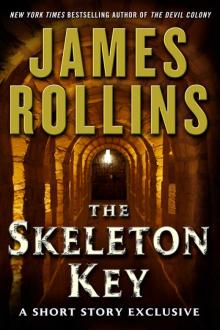 The Skeleton Key
The Skeleton Key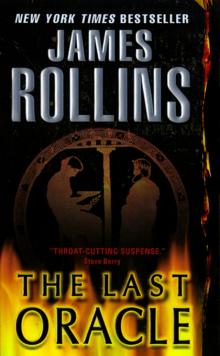 The Last Oracle
The Last Oracle The Judas Strain
The Judas Strain Black Order
Black Order Sandstorm
Sandstorm Ghost Ship
Ghost Ship The Devil Colony
The Devil Colony Subterranean
Subterranean The Doomsday Key
The Doomsday Key The 6th Extinction
The 6th Extinction Bloodline
Bloodline Jake Ransom and the Howling Sphinx
Jake Ransom and the Howling Sphinx The Midnight Watch
The Midnight Watch Map of Bones
Map of Bones The Demon Crown
The Demon Crown Deep Fathom
Deep Fathom Sigma Guide
Sigma Guide Kowalski's in Love
Kowalski's in Love Jake Ransom and the Skull King's Shadow
Jake Ransom and the Skull King's Shadow Excavation
Excavation The Seventh Plague
The Seventh Plague Altar of Eden
Altar of Eden Unrestricted Access: New and Classic Short Fiction
Unrestricted Access: New and Classic Short Fiction Indiana Jones and the Kingdom of the Crystal Skull
Indiana Jones and the Kingdom of the Crystal Skull Crucible
Crucible The Eye of God
The Eye of God The Bone Labyrinth
The Bone Labyrinth The Last Odyssey: A Thriller
The Last Odyssey: A Thriller Unrestricted Access
Unrestricted Access Amazonia
Amazonia Blood Brothers: A Short Story Exclusive
Blood Brothers: A Short Story Exclusive Map of Bones: A Sigma Force Novel
Map of Bones: A Sigma Force Novel The Skeleton Key (sigma force)
The Skeleton Key (sigma force)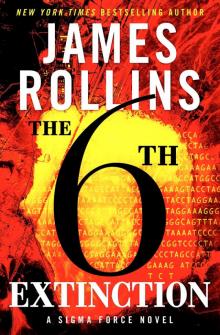 Sigma Force 10 - The Sixth Extinction
Sigma Force 10 - The Sixth Extinction Innocent Blood
Innocent Blood Map of Bones sf-2
Map of Bones sf-2 The Eye of God: A Sigma Force Novel
The Eye of God: A Sigma Force Novel The Eye of God: A Sigma Force Novel sf-9
The Eye of God: A Sigma Force Novel sf-9 The Pit
The Pit Indiana Jones and the The Kingdom Of The Crystal Skull
Indiana Jones and the The Kingdom Of The Crystal Skull The Last Oracle (2008) sf-5
The Last Oracle (2008) sf-5 City of Screams
City of Screams The Doomsday Key and The Last Oracle with Bonus Excerpts
The Doomsday Key and The Last Oracle with Bonus Excerpts The Judas Strain sf-4
The Judas Strain sf-4 Blood Infernal
Blood Infernal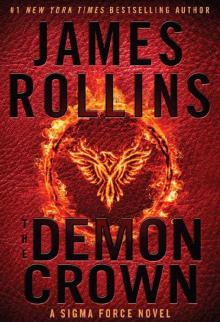 The Demon Crown: A Sigma Force Novel
The Demon Crown: A Sigma Force Novel War Hawk: A Tucker Wayne Novel
War Hawk: A Tucker Wayne Novel SANDSTORM sf-1
SANDSTORM sf-1 Bloodline: A Sigma Force Novel
Bloodline: A Sigma Force Novel Amazonia: a novel
Amazonia: a novel The Last Oracle: A Sigma Force Novel
The Last Oracle: A Sigma Force Novel City of Screams (the order of the sanguines)
City of Screams (the order of the sanguines) Ghost Ship: A Sigma Force Short Story
Ghost Ship: A Sigma Force Short Story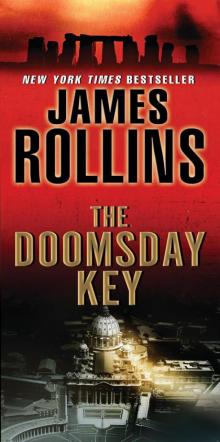 The Doomsday Key: A Sigma Force Novel
The Doomsday Key: A Sigma Force Novel